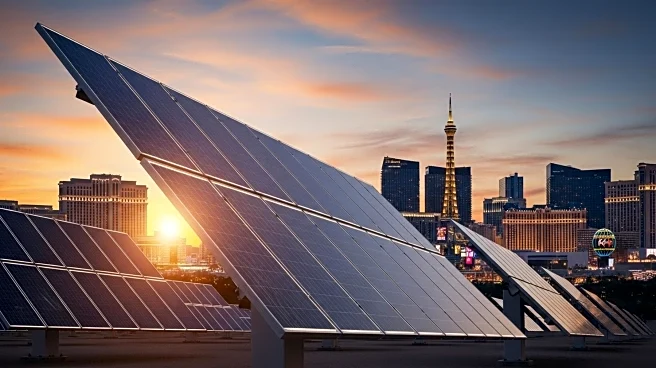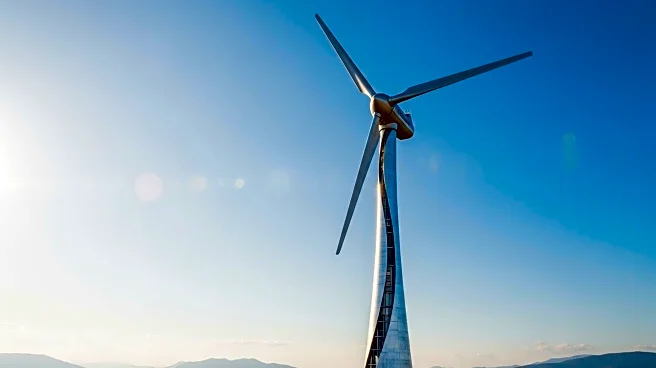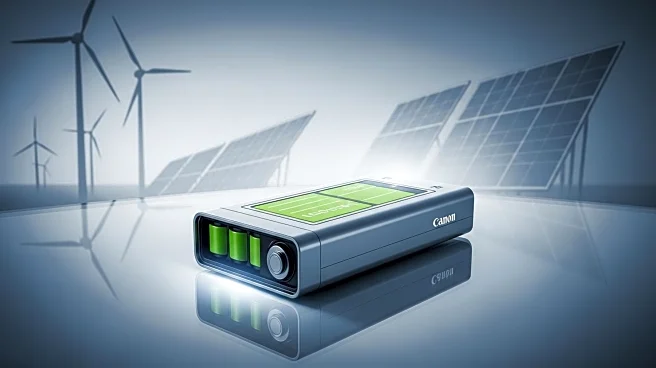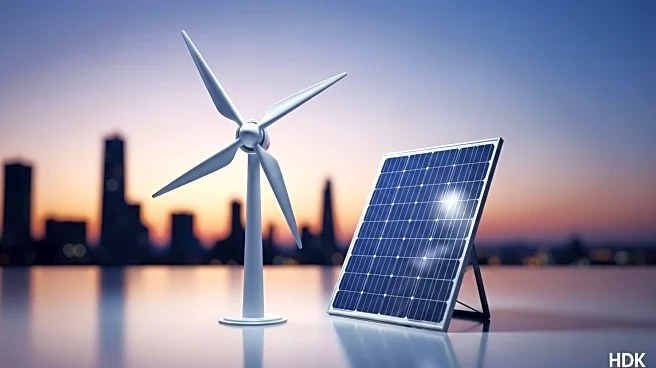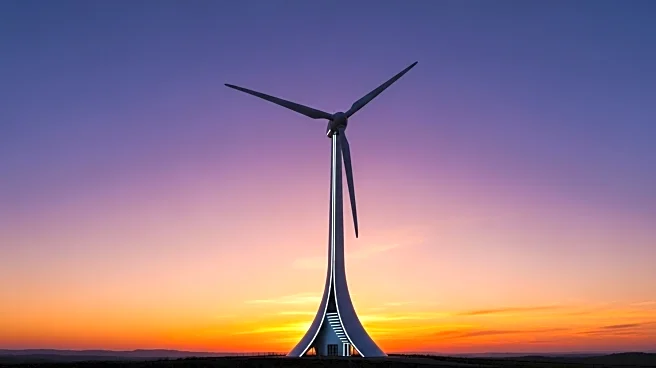What is the story about?
What's Happening?
The U.S. solar and energy storage sectors have seen significant growth, with solar installations reaching 7.5 GW-DC in the second quarter of 2025, marking a 28% increase from the previous quarter. Solar energy accounted for 56% of new generating capacity added to the U.S. grid in the first half of 2025, while storage contributed 26%. Despite these gains, federal policies under the Trump administration have introduced challenges, including tariffs and changes to tax credit eligibility, which have increased costs and reduced deployment forecasts. The Solar Energy Industries Association (SEIA) and Wood Mackenzie report that these policies could lead to a loss of 44 GW of solar deployment by 2030, representing an 18% decline compared to previous forecasts.
Why It's Important?
The growth of solar and storage is crucial for the U.S. energy future, providing cleaner alternatives to traditional power sources and supporting climate goals. However, federal policies that increase costs and hinder deployment could impact the reliability and affordability of the electric grid. Higher energy costs could affect families and businesses, reducing economic resilience and competitiveness. The potential decline in solar deployment also risks undermining efforts to transition to renewable energy, which is vital for reducing carbon emissions and combating climate change.
What's Next?
The solar industry is expected to continue facing challenges from federal policies, including tariffs and changes to tax credit eligibility. Stakeholders may need to advocate for policy adjustments to support renewable energy growth. The industry could focus on leveraging existing projects and meeting tax credit deadlines to mitigate near-term impacts. Long-term strategies may involve increasing investments in energy storage and exploring alternative financing mechanisms to sustain growth despite policy hurdles.
Beyond the Headlines
The federal policies affecting solar and storage growth highlight broader tensions between economic interests and environmental goals. The Trump administration's approach reflects a prioritization of traditional energy sources, which may conflict with global climate commitments. This situation underscores the need for balanced policies that support innovation and sustainability while addressing economic concerns. The evolving landscape may also influence public opinion and political discourse around energy policy and climate action.
AI Generated Content
Do you find this article useful?





